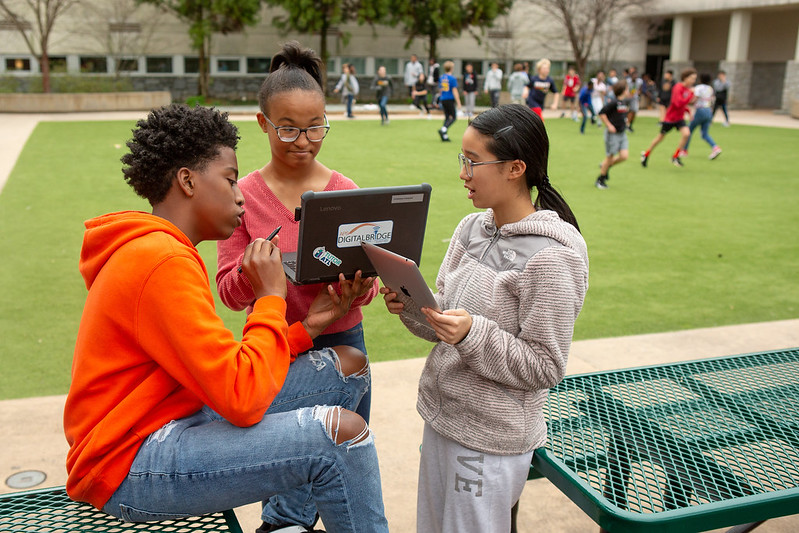Insights is a SmartBrief Education Originals column that features perspectives from noted experts and leaders in education on hot-button issues affecting schools and districts. All contributors are selected by the SmartBrief Education editorial team.
New research from the Department of Education reveals that underserved students experienced a disproportionate burden from the pandemic. The research also confirms that social, emotional, cognitive and academic development, as well as cultural identity, are all connected. To improve students’ academic outcomes, education leaders and others entrusted to support multilingual students must nurture each of these areas with an asset-based approach that is personalized to meet the needs of each student as they return to school.
Educators have an opportunity to evolve. Let us assure that all students are met where they are academically and emotionally while continuing to propel achievement — whether it is in the classroom, in a hybrid model or through remote learning.
Multilingual learners have traditionally been underserved, and yet identified best practices support the academic and emotional growth of these students and their families. Essentially, we don’t have to reinvent the wheel. Educators can leverage what is already known about English learners to support learning in new formats and address disrupted learning.
Disruption leads to innovation
Innovation has resulted from the pandemic’s disruptions. Our nation has narrowed the digital divide. Educators have explored new social-emotional supports, and parents have transformed into collaborators in learning. So, we’re heading in the right direction.
Numerous strategies can be implemented to accelerate academic growth, such as tutoring, summer school, after-school instruction, extended school hours and various online programs. However, it is essential to keep in mind that social-emotional wellbeing is just as important for academic growth. Love, empathy and compassion along with math, science and reading will bring students through the end of the pandemic and its aftermath.
When the most recent school year ended, many students felt estranged from their schools. Some lost trust, confidence and motivation. They felt less control over their future and were yearning for connections to one another and to their teachers. In this upcoming school year, we must focus on reconnecting with students to restore their trust, rebuild relationships and reignite their confidence and motivation for learning. Our students have experienced anxiety and trauma, and so an enhanced focus on social-emotional wellbeing will help ensure they are ready to learn.
More than ever before, we need to respond to each child individually. This includes incorporating lessons on social-emotional skills into the curriculum and giving students an opportunity to put into practice those skills — such as identifying their feelings, forming positive relationships, demonstrating empathy and setting achievable goals.
Moving to an asset model mindset
Our goal is to treasure each learner for the superpower they bring to the classroom instead of labeling them by the skill they lack. If we approach our current systems from an asset-model mindset, our systems inevitably will change. We want to ensure that multilingual learners and their communities are reflected and valued in the content they’re taught in school. A focus on the positive contributions that multilingual learners make to the classroom can help teachers improve emergent bilingual achievement and discourage them from disengaging.
Cultural responsiveness, or the ability to learn from and relate respectfully with people of your own culture and others, is an essential component of today’s classroom. As part of culturally responsive education, teachers can recognize the valuable cultural experiences of emergent bilingual students and find ways to incorporate them into classroom activities. Teachers also can consider culturally sustaining pedagogy, an approach that helps students develop a positive cultural identity while learning subjects such as math, reading, problem-solving and civics.
It is important to note that multicultural education and culturally responsive pedagogy are not the same thing. For example, education that is multicultural (with content representative of various cultural perspectives) can be delivered to a classroom containing students from the same culture. Culturally responsive pedagogy, on the other hand, must respond to the cultures of students that are present in the classroom. It connects new information to students’ background knowledge and presents it in ways that respond to students’ natural ways of learning.
Motivation arises out of the learning environment; it is not something all students have. Students desire to be heard by their teachers and their peers. They also are more engaged in classes that require verbal participation, where they are fully embraced as part of the learning community. Social activities also help students bond with others and create psychological safety. When students feel safe, they’re motivated to participate in class, ask questions, complete difficult assignments and learn a language.
Now is the time to create opportunities to leverage the involvement of families in each child’s education. Teachers cannot address the loss of learning and instructional time on their own. Families played a pivotal role during the pandemic while supervising their child’s learning at home. I encourage educators to keep families involved by celebrating students, their heritage and their hard work.
This asset-based approach challenges the more popular deficit-oriented teaching methods. Actively engaging students in meaningful and culturally relevant learning experiences rooted in high academic expectations for all students will improve academic outcomes for emerging bilinguals. It also helps ensure that students can identify with the content they’re taught in school when they and their communities are reflected and valued in the content.
In the months to come, let’s endeavor to incorporate these asset-based elements into our instruction. These elements will foster learning for multilingual students and envelop all learners with opportunities for success.
Dr. José A. Viana is a former assistant deputy secretary in the office of English Language Acquisition at the Department of Education and is a senior advisor at Lexia Learning.
________________________________
Like this article? Sign up for our EdTech news briefing to get news like this in your inbox, or check out all of SmartBrief’s education newsletters, covering career and technical education, educational leadership, math education and more.
More from SmartBrief Education:
